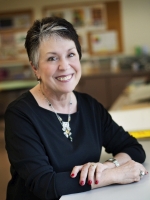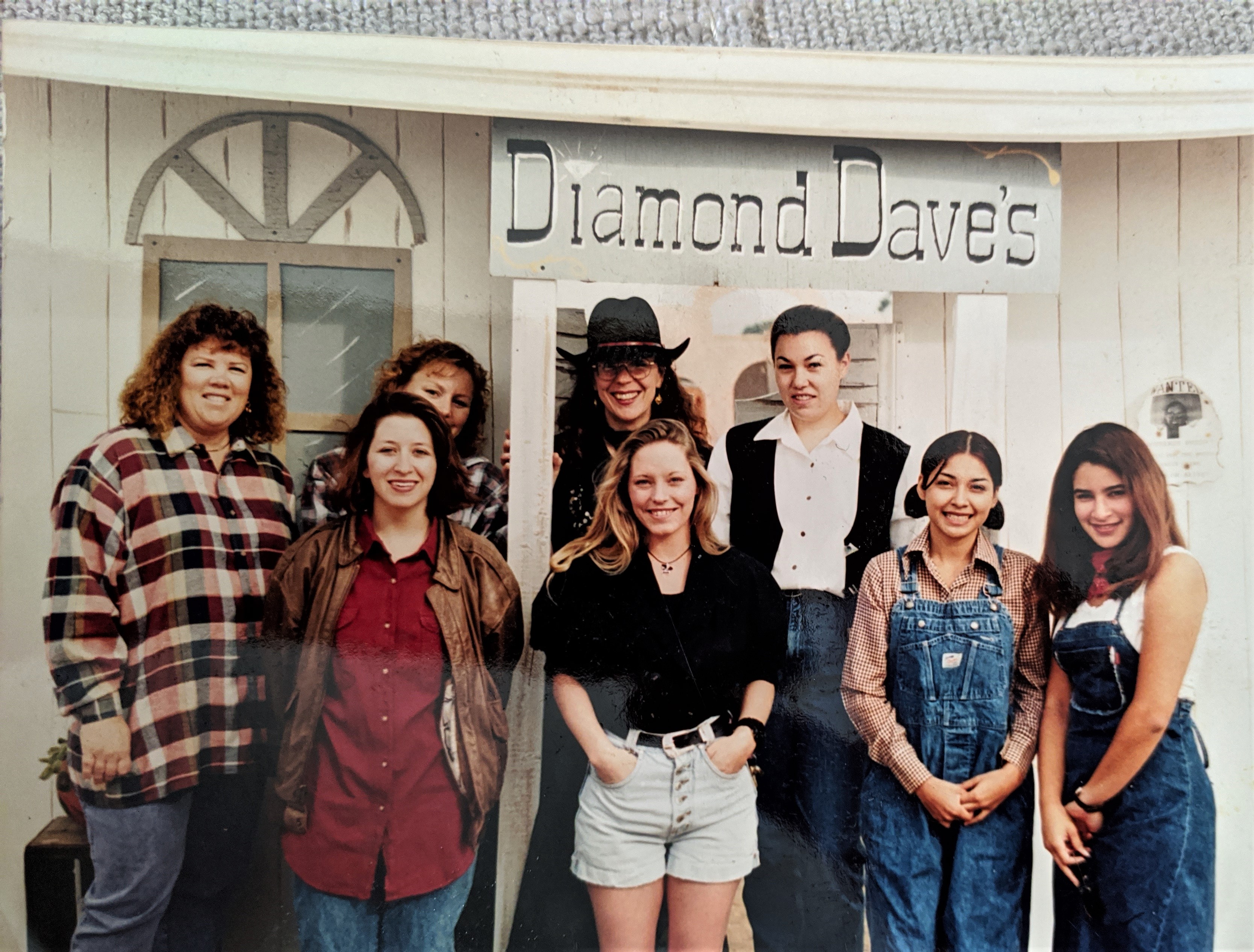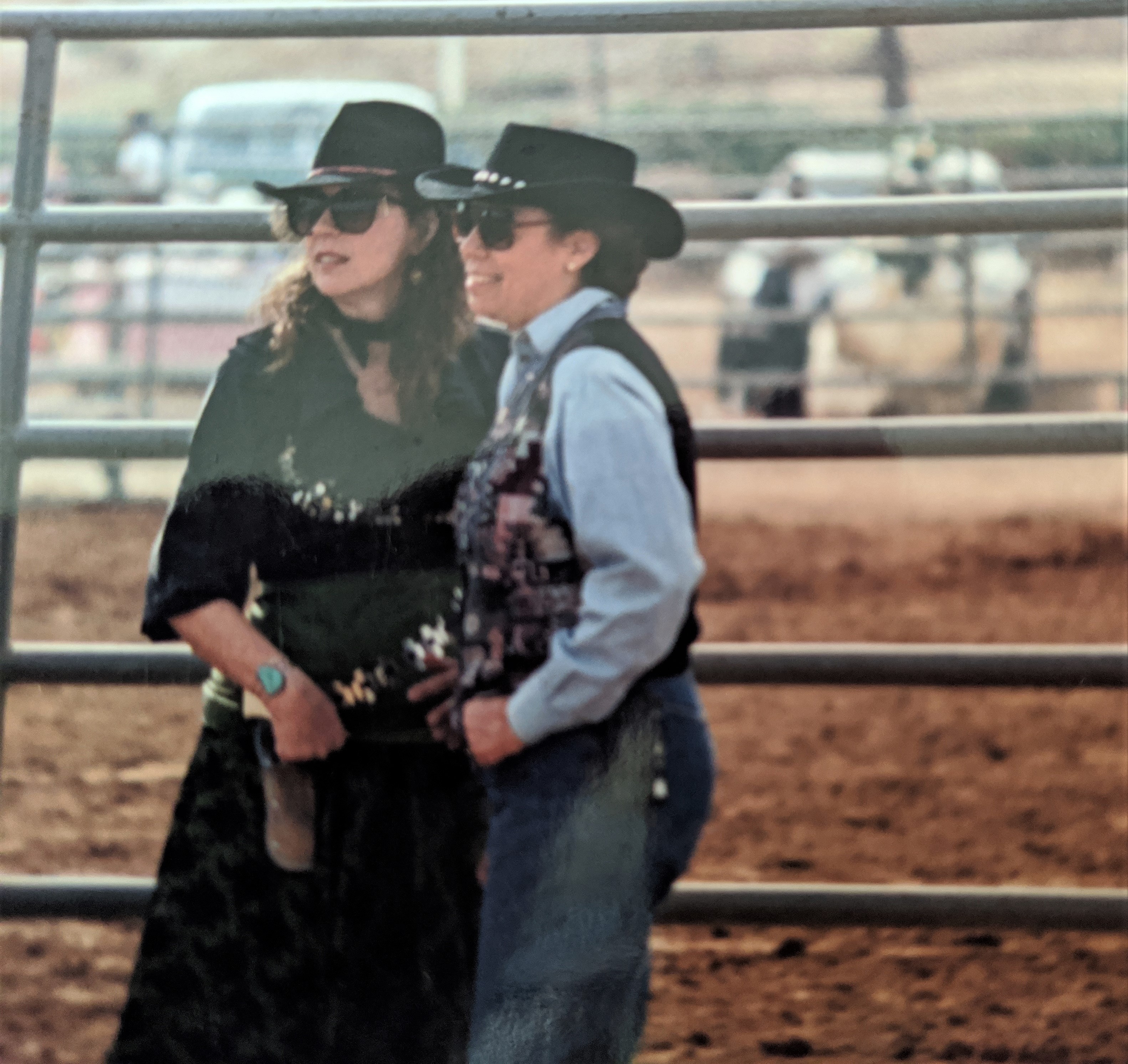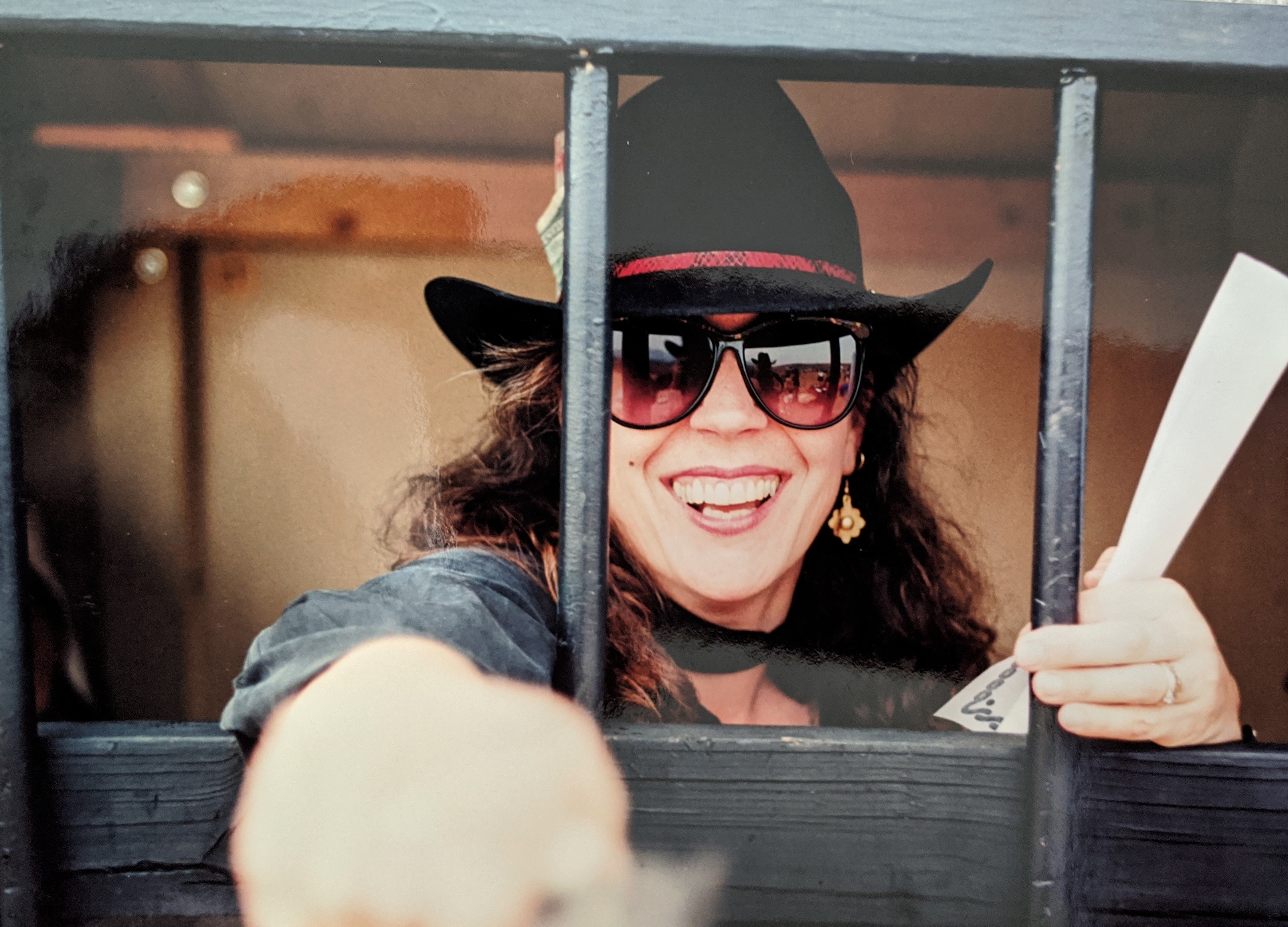
Dr. Karin Skiba
Professor Emerita of Art
Norco College School of Visual,
& Performing Arts
(Retired in December 2011)
- 21 years of dedicated service
Karin Skiba (Russo) attended the Center for Creative Studies in Detroit, Michigan, moving to Canada at age 21. There she began large scale batik sculpture, which she showed in museums and galleries. Coming to California in 1977, she returned to school. At Claremont Graduate University in 1980, Karin began to cut her images from wood and build her paintings, becoming one of several artists known for painted sculpture.
Karin accomplished her MFA in 1982 and began to show her work at Barnsdall Park Art Center, LACMA, Security Pacific and other galleries in LA, Oregon, Chicago, and Detroit. Creating a strong exhibition record, she began teaching at Riverside Community College District in 1990 and was the full-time art instructor at Norco College from 1991 until 2011. While working at the Riverside Community College District, she was CTA Faculty Union President, and participated in the RCCD Study Abroad program, teaching three semesters in Florence, Italy. For
several years after formal retirement as Faculty Emerita, she established and ran the Norco College Art Gallery. She continues to teach Art Appreciation online as
one of the original online teachers from the faculty cohort of 1998.
With a resume that includes solo exhibitions in venues such as La Verne University and Cal Poly Pomona as well as the Riverside Art Museum, Karin has created art for over 45 years as an example of artistic persistence and passion. She now has a studio in Joshua Tree, CA, and devotes most of her time to making art. In February 2019, Karin had a solo exhibit, “Wanderland”, at the Joshua Tree Art Gallery. In November of 2019, she had another solo show at the 29 Palms Art Gallery.
Artist’s Statement
There is phenomenal beauty on this planet that is still intact after all these years of humans sharing the planet. Despite the environmental challenges by Mother Nature as well as the wrath of man, there still stands beauty.
As artists we create to embrace the beauty and light that shines through in the world. Our job is to bring that light forward.
No matter what I ultimately do with my creative skills, I believe my role is to continue to make art because to create is a magical and important thing. You find the method of expression that best determines your voice and move from there. For me, it is mixed media collage and fabrication– sometimes defined as “poetic displacement.”
Having amassed 45 years of self-created images from my art adventure on this earth, this past year I have been mining photographs and art from my archive.
In rummaging imagery from my previous work, new wonders emerge. The discovery is fascinating.
I have a “treasure chest” of visual media longing to be viewed and this is a way to bring it forward.
Also, the forced isolation from the pandemic this past year has somehow resulted in a freedom to lift expectations and expand, manipulating that imagery once again but in a different way.
Using my 50-year-old sewing machine that is my longtime friend, I set to work combining net, fabric, paper -new, repurposed- resulting in the “Rose Quilt”. It is non-traditional yet embraces traditional women's handiwork because of the use of sewing and the typical grid layout.
I photographed flowers, some from my mother's funeral bouquets, others from bouquets of roses. These archived photos are then printed on canvas, enabling me to sew them onto paper and fabric.
Ultimately, this creation becomes a tribute to feminine practice on many levels, and a personal reflection as well.
It also brings back my love of construction.
Making art this way is a personal return to old skills combined with new exploration.
My paper and mixed media book, “Vagrant Angels”, contains portraits that are a compilation of fictional women I have painted over the years. The photographed images are reproduced onto canvas, and the result is an accordion fold book 90” by 10”. I wrote either prose or an explanation for each of the portraits in the book. The “Vagrant Angels” is mixed media sewn paper, fabric, and canvas.
The “Homage to the Perfection of Imperfection” sculpture consists of collages, reproduced images on paper from my paintings, patched and fragmented as are we. Mixed media, sewn with fabric and paper.
This past year I also continued a series I began in 2014 about wives of famous men. It seems there usually is a woman behind some of the men in history, patiently waiting for their husband to come home from exploring America, China, or leading an empire.
I reworked the wife of Noah and Magellan, both which were previously done on large paper. The photographs of the work were reproduced onto canvas thereby letting me manipulate them in a new way. “Wife of Noah, Naamah, Homage to Patience and Grace”, and “Wife of Magellan, Beatriz, Homage to Patience and Grace”.
A new portrait became “Wife of Otto the Great, Adelaide, Holy Roman Empress, Homage to Faith and Fortitude”. She is also done in mixed media with embellishment. Two other paper quilts were completed in 2020. One of canvas reproductions of 3D work, “Fairy Tale Village”. The other is “Female Integrity”, which is all sewn paper collage and acrylic paint.
The sculpture/shrine with photos of old toys and dolls is called “Shrine to Rescued Toys and Remnants of Past Loves”. It is sewn paper and canvas photos, with embellishment of mixed media. The decorated legs are wood.
From my stash of old slide transparencies, I found numerous images of portraits from early colonial times that had turned pink from age. Using the pink portraits of women from this group of images, the sculpture/shrine is the “Homage to Duty and Dignity: Wives of early Americans”.
Here is a list of the women in the artwork:
- The older woman at top is Mrs. Anne Pollard, from 1721. She was born in England and came to the colonies in 1630. She was one of the first ashore at Boston at age 8. She lived to be 104, taking over her husband’s inn, or “ordinary”, after his death.
- Elizabeth Paddy was from Plymouth Mass, and married John Winsley.
- Another portrait is Mrs. Eleanor Bowles Lewis, who was married to William Gooch, son of a governor, and then married Warner Lewis.
- Deborah Hall was 16 in 1766 when this portrait was done. She came from a wealthy family and stands by a sculpture of Daphne and Apollo to show her purity.
- Mrs. Ben Tallmadge was Mary Floyd, and her father was one of the signers of the Declaration of Independence as well as governor of New York. She had 7 children. She is shown here with 2 of them.
- Hannah Upham Haskins, from Boston Mass, 1759. A follower of the Congregationalist faith and very pious.
Finally, to continue with my rose theme, “Tribute to the Red, White and Blue” is a mixed media work done at the time of the 2020 election.
Website: www.karinskiba.com and
Instagram #karinskibaart
To view the Art program page, click here.
Memories of Norco College

Memory by Professor Emerita of Art, Karin Skiba (1993)
The original student services at Norco in about 1992 was led by retired professor Bob Prior, among his other duties. We had a rodeo one spring, and I am thinking it was 1993.
I had formed an art club with some really wonderful students who were in my art classes. We helped build storefronts, a jail house, and a few other places for the rodeo itself. There were a few clubs then. The rodeo was held in the dirt area that is today a parking lot. Remember, in those days, all we had was the admin building, the Humanities, the theater and the building that now houses the gallery. Everything was taught in those buildings. Faculty offices were far and few between and we shared them.

Norco College Professor Karin Skiba (center), Norco Campus Art Club and others, circa 1993
The rodeo was a fun event, and we had the support of the community. There were a lot of horse people from Norco, cowboys, Iron Eyes Cody, and lots of visitors and students. Our police officer was there on a horse if I remember correctly.
As you can see, some of us wore our cowboy Stetson hats and got into it. One photo shows me (with my long hair) with Beatriz Vasquez, who was another founding faculty member.

Norco College Professor Karin Skiba (left) and Beatriz Vasquez at Rodeo, circa 1993
There is also a photo of me in the jail they built. In those days, we were still attached to the RCC campus as far as departments were concerned, and those of us who were full time at Norco were pioneers at best.

Norco College Professor Karin Skiba in Rodeo Jail, circa 1993
In 1990, when I was hired in with about 40 fellow faculty members, under President Kane, we were taken for a tour of the properties that would be Norco and Moreno Valley campuses. We were on a bus that drove to Norco, which seemed so far from Riverside, and shown this empty rocky land -told that this would be a campus (now Norco College). Then we went out to Moreno Valley where it was the same thing-empty land for that campus. Hard to believe how much has changed since then.
The original faculty would meet for lunch at Raspberry's Restaurant, which is now Baja Taco. There were about eight of us. I had been put on the Academic Senate as advised by Provost Marie Pepicello, and so this was where I would report back to my colleagues. We only had one Senate in 1993.